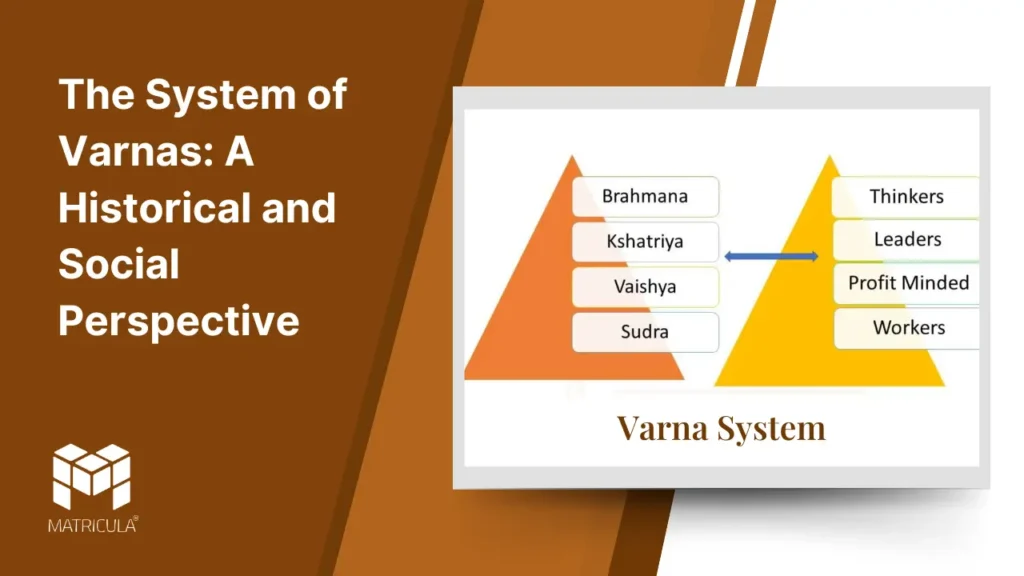The system of varnas, central to ancient Indian society, is a framework of social stratification described in Hindu scriptures. Derived from the Sanskrit word varna, meaning “color” or “type,” this system categorized society into four broad groups based on occupation and duty (dharma). While initially envisioned as a functional and fluid classification, the varna system evolved into a rigid social hierarchy over time, shaping the social, economic, and cultural dynamics of the Indian subcontinent.
Origins and Structure of the Varna System
The earliest mention of the varna system is found in the Rigveda, one of Hinduism’s oldest texts, in a hymn known as the Purusha Sukta. This hymn describes society as emerging from the cosmic being (Purusha), with each varna symbolizing a part of the divine body:
- Brahmins (priests and scholars) were associated with the head, symbolizing wisdom and intellectual pursuits. They were tasked with preserving sacred knowledge, performing rituals, and providing spiritual guidance.
- Kshatriyas (warriors and rulers) were linked to the arms, representing strength and governance. They were responsible for protecting society and upholding justice.
- Vaishyas (merchants and agriculturists) were associated with the thighs, signifying sustenance and trade. They contributed to the economy through commerce, farming, and animal husbandry.
- Shudras (laborers and service providers) were connected to the feet, symbolizing support and service. They were tasked with manual labor and serving the other three varnas.
This division was rooted in the principle of dharma, with each varna fulfilling specific societal roles for the collective well-being.
Evolution into a Caste System
Initially, the varna system was fluid, allowing individuals to shift roles based on their abilities and actions. However, over time, it became closely linked to birth, giving rise to the rigid caste system (jati). This shift entrenched social hierarchies, limiting mobility and creating a stratified society.
The caste system introduced numerous sub-castes and emphasized endogamy (marrying within the same caste), further solidifying divisions. Those outside the varna system, often referred to as “Dalits” or “untouchables,” faced severe discrimination, as they were deemed impure and relegated to marginalized roles.
Impact and Criticism
The varna system profoundly influenced Indian society, dictating access to education, wealth, and power. While it provided a framework for social organization, it also perpetuated inequality and exclusion.
Reformers and thinkers like Buddha, Mahavira, and later figures like Mahatma Gandhi criticized the rigidity and discrimination inherent in the caste system. Gandhi referred to Dalits as Harijans (“children of God”) and worked to integrate them into mainstream society. In modern India, constitutional measures and affirmative action aim to address caste-based discrimination.
Varna in Contemporary Context
Today, the varna system’s relevance has diminished, but its legacy persists in the form of caste-based identities. Social and political movements in India continue to grapple with the enduring effects of caste hierarchies, striving to create a more equitable society.




